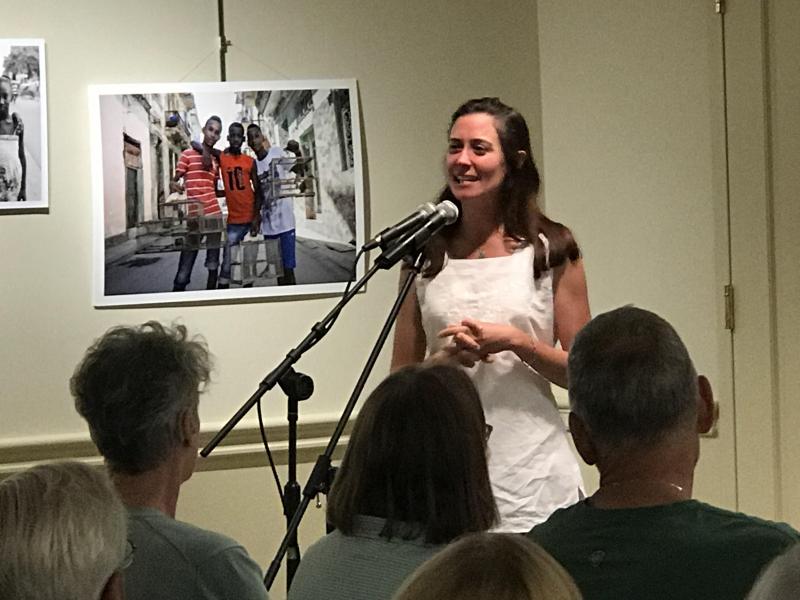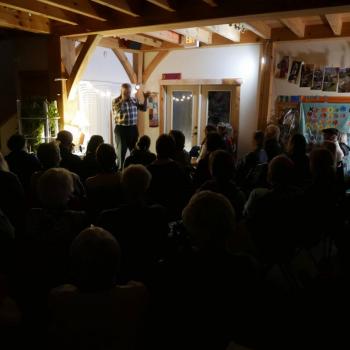HOPE—Meghan Vigeant, an oral historian and writer, has made the art of telling a story her life’s work. After 12 years of producing audio narratives and books for private clients, organizations, and public radio, she has just formed a new workshop to be held at Sweet Tree Arts called “Storytelling 101.”
“I’ve always been fascinated by storytelling in general, but the type of stories told before an audience, true personal stories, sort of like The Moth story slams, is a form that really appeals to me,” she said. “Also, I used to work as a professional actor and there is a certain magic that happens between the people on stage and the people in the audience. I want to share that magic, get people to go beyond their fears, get them excited to stand up and share a little gem from their world.”
The Moth, whose tagline is "True Stories Told Live," holds live storytelling events all over the country and plays many of them on their podcast and on NPR.
The format of oral storytelling is one of the oldest forms of entertainment and education, but what makes story slams like The Moth so compelling is that they are contemporary stories covering a great range of human experience.
However, the art of storytelling may not come easily to everyone. It’s one thing when Uncle Joe has a rapt audience among his family members around kitchen table, but it can be quite another situation when Joe has to stand on stage in front of a large audience, many of whom he doesn’t know. Even a fantastic storyteller can get tripped up by the unfamiliar element of public speaking and a great story can go flat.
“There are a lot of aspects to shaping up and polishing a really good story before going in front of an audience,” said Vigeant. “Memory of the details, of course, is just one element. Some people are unsure of how to begin and how to wrap it up. Then, there’s choosing what to put in, what to take out, how to hone it for say, a five-minute slot — all of these are skills that can be learned and practiced. It’s very similar to what a writer experiences: setting the story up, building trust with the audience, and telling a story in a way that feels natural.”
The Moth offers its own Storytelling Tips. On its page, The Moth offer an interesting list of Story Slam “Don’ts” — those pitfalls storytellers have gotten themselves into on stage. For example, consulting one’s notes up on stage is not allowed in a story slam environment. That said, the storyteller shouldn’t feel he is at a deposition and has to memorize every line. There is a natural rhythm to each story. And there needs to be “stakes” in live storytelling; that is, the storyteller has to have something to gain or lose within the story.
“The topics people pick are often very personal,” explained Vigeant. “The stories have to be true, but, the kind of story that’s universal–the ‘we’ve all been there’ kind of story’, whether it’s embarrassing, funny, heartbreaking, or vulnerable — that’s the kind of story that really resonates with an audience."
Vigeant’s four-week workshop, “Storytelling 101” goes from Feb. 21 to March 14 at Sweet Tree Arts in Hope.
“The class will perform their stories during the last class for an audience of family and friends, and, if they chose as a group to open it up, we may invite the public as well."
For more information visit: Stories To Tell
Kay Stephens can be reached atnews@penbaypilot.com



























